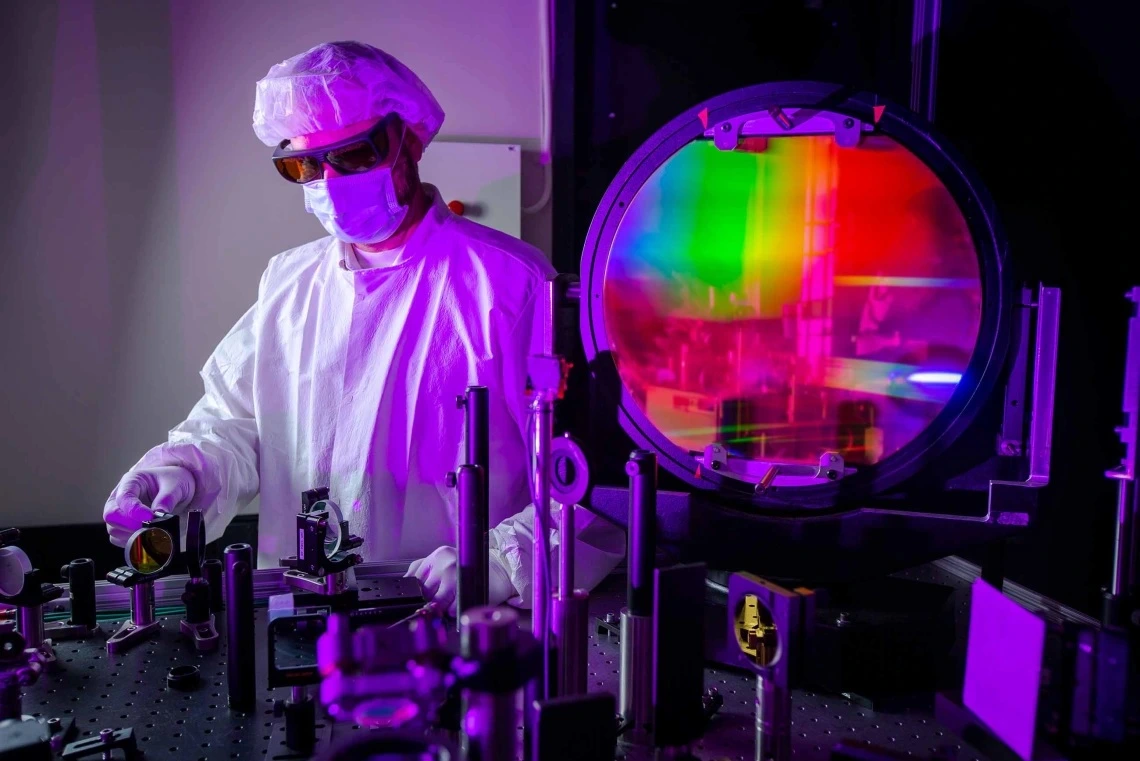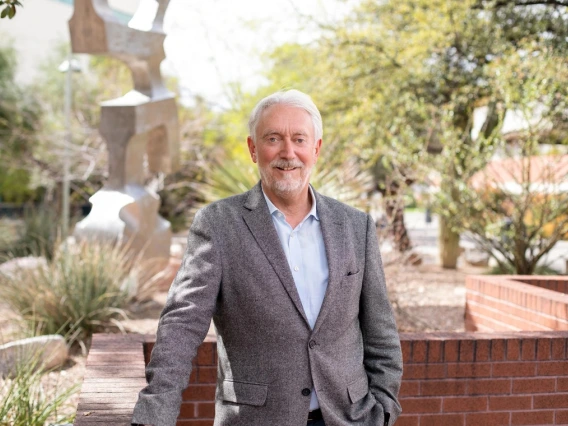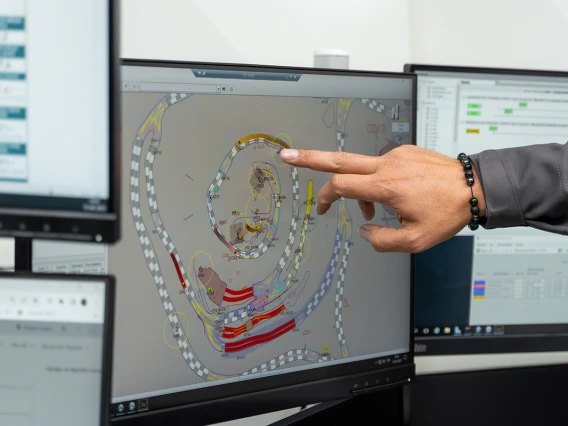University of Arizona joins STARFIRE Hub for inertial fusion energy
Materials scientist Horst Hahn works to bolster the university's strategic research initiative by uniting with industry in national research hub.

A technician works on laser technology research and development at the Lawrence Livermore National Laboratory. LLNL leads a fusion energy consortium that includes the University of Arizona.
Photo courtesy of Lawrence Livermore National Laboratory
The University of Arizona has joined a national, multi-institution research hub to advance the manufacturing technologies required for achieving the benefits of fusion – a safe and sustainable energy source.
The IFE STARFIRE Hub is a public and private partnership established in 2023 with a four-year, $16 million grant from the U.S. Department of Energy. Lawrence Livermore National Laboratory in California spearheads the hub’s effort to accelerate inertial fusion energy, or IFE, science and technology. STARFIRE is one of three DOE-funded hubs focused on IFE.
IFE fuses hydrogen isotopes to produce abundant and clean energy. However, harnessing the fusion reactions that fuel stars will require scientists to overcome formidable barriers.
STARFIRE Hub membership positions Arizona to advance IFE innovation and education through close collaboration with other partners – universities, national laboratories and businesses – to address the world’s energy security challenges, said Tomás Díaz de la Rubia, senior vice president for research and partnerships.
“The promise of fusion energy lies not only in its scientific ambition but in the transformative partnerships it inspires,” Díaz de la Rubia said. “By aligning with the STARFIRE Hub, Arizona is advancing a bold vision that connects our institutional strengths with a national effort to accelerate fusion innovation, train the workforce of the future and deliver clean, abundant energy for generations to come.”
U of A leaders, aided by stakeholder communities, recently identified fusion energy as a top-priority research initiative. The Arizona Board of Regents has provided funding from the state’s Technology and Research Initiative Fund, or TRIF, to propel the university’s commercial fusion efforts.

Horst Hahn works to position the university and Southern Arizona as a global leader in fusion energy engineering, technology, workforce development and commercialization.
ORP
Horst Hahn, a professor in the Department of Materials Science and Engineering and foreign member of the National Academy of Engineering, joined the U of A in March as a special advisor to Díaz de la Rubia and serves as the university’s strategic architect for fusion initiatives.
“The U of A offers a wide range of expertise, particularly in optical sciences, engineering and materials science. It’s a strong environment for launching initiatives aimed at tackling the challenges on the way to commercialization of fusion energy,” Hahn said, noting that only a small number of U.S. universities are actively involved in advancing fusion research.
U of A researchers’ collaborations with hub members will largely concentrate on engineering hurdles and scaling. Although experiments have demonstrated IFE’s promise as a safe and sustainable energy source, significant technological breakthroughs are still required before a fusion power plant can become operational, Hahn explained.
One significant challenge in advancing IFE stems from its reliance on powerful lasers to create extreme heat and pressure within a fuel capsule containing hydrogen isotopes. The lasers are energized by arrays of laser diodes – semiconductor devices that amplify their intensity. Several advances in diode technology must occur to make large-scale, cost-effective power generation feasible. Enhanced manufacturing processes and packaging, as well as testing for reliability and lifespan, will reduce diode cost and increase production rates.
“This requires collaboration among experts across diverse disciplines, as well as active exchange between industry, national labs and academia,” Hahn said.
Together with Tucson-based STARFIRE Hub participant Leonardo Electronics US Inc. and other industry partners, the U of A is exploring the possibility of building a diode-pumped laser research and training facility.
Component manufacturing is one of several fusion ecosystem issues STARFIRE Hub members are addressing. They’re also preparing and training the specialized workforce needed to build and nurture the industry.
Hub membership provides university researchers and faculty with opportunities to develop and share emerging knowledge. Hahn also anticipates that Arizona students will benefit from STARFIRE’s educational offerings, including a graduate-level online course scheduled to launch in January 2026.
“The STARFIRE Hub is excited to welcome the University of Arizona to our constellation of partners. Strong academic collaborations are essential for advancing fusion technology and developing the next generation of fusion pioneers. Together, we are working to make fusion energy a reality,” said Tammy Ma, STARFIRE principal investigator and lead for inertial fusion energy at LLNL.



